A Summer of Discovery: Researching childhood immunization in rural Narok, Kenya communities
By Evelyn Thompson ’24
The Global Research Institute’s Summer Fellows Program provides international experiential learning opportunities to W&M students. This post is one installment of a series highlighting the 2023 Fellows’ key discoveries and formative experiences.
This past summer, I had the privilege of serving as a Summer Fellow in Narok County, Kenya, representing GRI’s Ignite lab. The other fellow, Katie, and I spent our nine weeks on the ground in Narok working with our host organization on digitizing paper child immunization records, conducting observations of the clinic day to day, and actually getting hands on with the record keeping practices used there. Working in Kenya for the summer was a once in a lifetime experience that I would recommend for anyone looking to get out of their comfort zone and expand their horizons. The people I met, places I saw, and poignant research I got to be a part of all made this experience so unforgettable.
Before I get too deeply into my own personal experiences while there, I’d like to spend some time describing the nature of the project, what we did for our job, and what we were looking for. The Ignite lab has a longstanding partnership with the Community Health Partners (CHP), a local non-profit health organization located in Narok; CHP was established officially in 2011, but has been providing care much longer under the Christian Missionary Fellowship (CMF). The CHP outposts provide extensive care to the surrounding community through both their outposts and mobile clinics, focusing on things like childhood immunization, HIV counseling, family planning services, pharmacy services, and basic checkups.
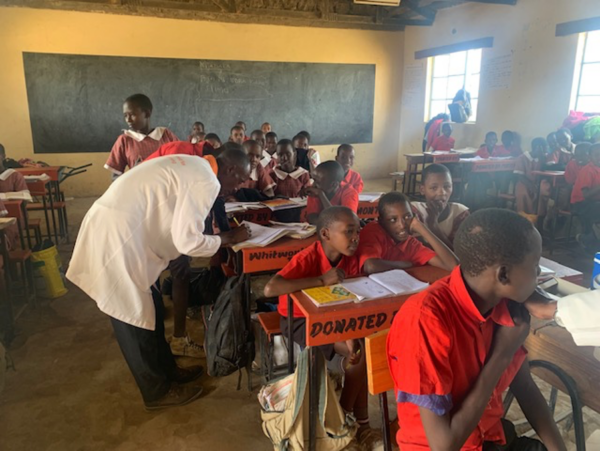
CHP staff on a mobile clinic visit to help school aged children fill out their vaccination cards. The clinic provided HPV and Covid-19 vaccinations to the school children.
For the research this summer, Katie and I collected data from 8487 children’s records across all four CHP clinics located in Ewaso Ngiro, Mara Rianta, Aitong, and Talek. The data we recorded included gender, home village, date of birth, and the dates the following vaccines were administered: BCG (tuberculosis), OPV (poliovirus), DPT (diphtheria, tetanus, and pertussis), PCV (pneumococcal), Rotavirus, and MR (measles and rubella). We were curious to examine how vaccine timeliness and dropout rates were stratified by variables such as vaccine type, vaccine dosage, facility, geographical location, season, and gender.
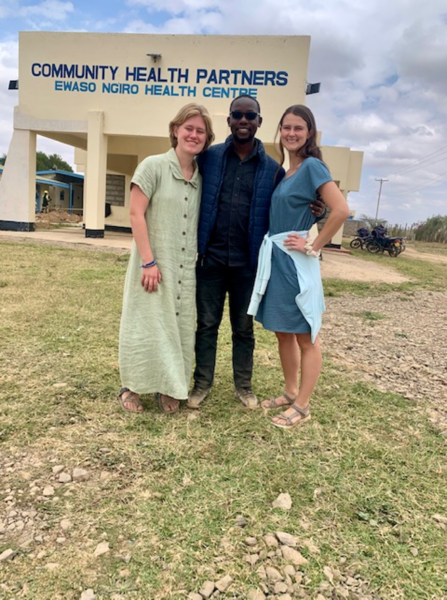
Part of the Ignite team outside of the Ewaso Ngiro CHP location. Dr. Julius Odhiambo, Ignite Senior Research Fellow and Assistant Professor of Kinesiology, joined us for the last week to help with the data analysis.
While we are still in the process of officially concluding the results from our analysis, I can say that excitingly there are some clearly observable trends in the data. First, there appears to be a steady dropout increase when there is a dosage increase; this means that there are less children receiving their third dose of a vaccine than their second, and less of their second than of their first. Also, the tuberculosis vaccination is received by the largest percentage of children across all four facilities. Finally, vaccines received later in a child’s life, such as measles, are received at noticeably lower rates than the earlier vaccinations. Our team is very interested in the extent to which timeliness of childhood vaccination affects both a community’s overall long-term coverage and the child’s medical trajectory in general. Ignite’s larger goal is to make sure materials and support are allocated most efficiently to the places they will make the largest impact, and this research will help inform that overarching objective. If you are curious about some of the more nuanced findings, make sure to keep an eye out for the paper Ignite will be publishing on the research.
Now, while I am very passionate about the research we conducted while in Kenya, I think the biggest takeaways I brought back with me were from the lifestyle I was suddenly plunked into. I arrived in Kenya on June 1st and made it down to Narok on the 3rd. Our first stop was Ewaso Ngiro, the mother hub to all other CHP outposts. There we met John Sancock, head of CHP, in person for the first time. John is a very jovial man, always making his presence known with a hearty hello and his witty sense of humor. Katie and I also were introduced to the faculty of the Ewaso Ngiro CHP, who we would become quick friends with later. We stayed in staff housing at Ewaso for two weeks, living amongst a small neighborhood of CHP employees and their families. While there, the environment was a hard contrast to the fast–paced, stressful life of a college student at William & Mary.
Back in Williamsburg, I was high off my junior year of spring, filled with an intense course load, an internship, a job, and plenty of late nights out and about with friends. Now, my days started with waking up to cattle grazing outside my window, working with babies in the clinic, walking to the market for milk each day, sitting on our porch making friendship bracelets with the neighboring children, going to three hours of church on Sundays, and exploring the outdoor market for fresh produce. The work atmosphere, while still filled with hustle and bustle, was lacking the normal stress and high pressure feelings that so many jobs and internships have in the United States. Everyday there was tea at 11 am, an event where all the workers stopped to have chapati and chai with each other as they chatted about work, family, and more. In addition, everyone made sure to take the time to make work more than just an office space by going on walks and sitting outside during slow hours. This general work sentiment was echoed by John, as anytime I got a little too worried about tasks or timelines, he without fail reassured me with a “Hakuna Matata,” reminding me to not get wound up over little things.
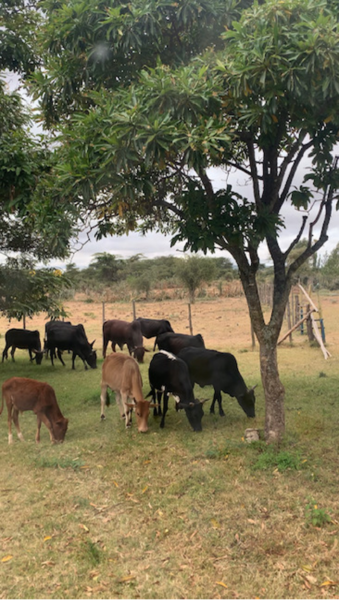
The view outside my window most mornings! The cows roamed the CHP property, and often you just had to walk around them.
Originally, I couldn’t help but feel a sense of restlessness without my normal fast paced lifestyle and a sense of annoyance at the nonchalance over timelines and other things. But slowly, I grew to appreciate the slowness of it all. For the first time in a long time I swung on a set of swings, let numerous little hands braid my hair, and drank tea while watching the afternoon storms roll in. I got to sightsee so much of Narok by car while collecting geo coordinates, laughed with coworkers over babies’ antics, and had some amazing conversations with lovely people. All these small experiences made me slow down for the first time in years and fully see some of the things I had been missing out on while swept up in the constant hustle of American college life. This lesson that I don’t have to be doing the most at all times or having the most exciting experiences in order to be content is one that really stuck with me, and I have applied the mindset more to my senior year. I’ll never forget the friends I made in Kenya nor CHP, and I will forever remember to apply John’s two words of wisdom whenever it all starts to feel like too much: Hakuna Matata.
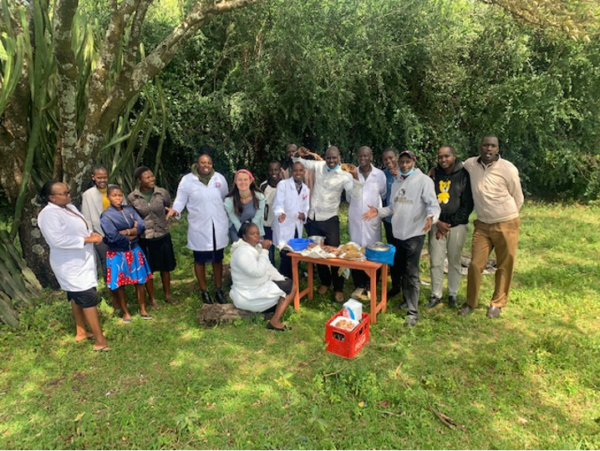
The Aitong CHP facility celebrated 4th of July with us with a roasted goat cookout (called Nyamachoma).

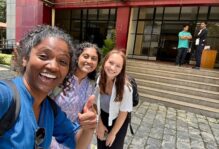
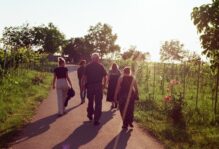
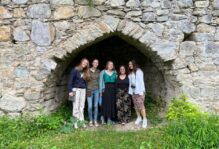
Beautiful and valuable people